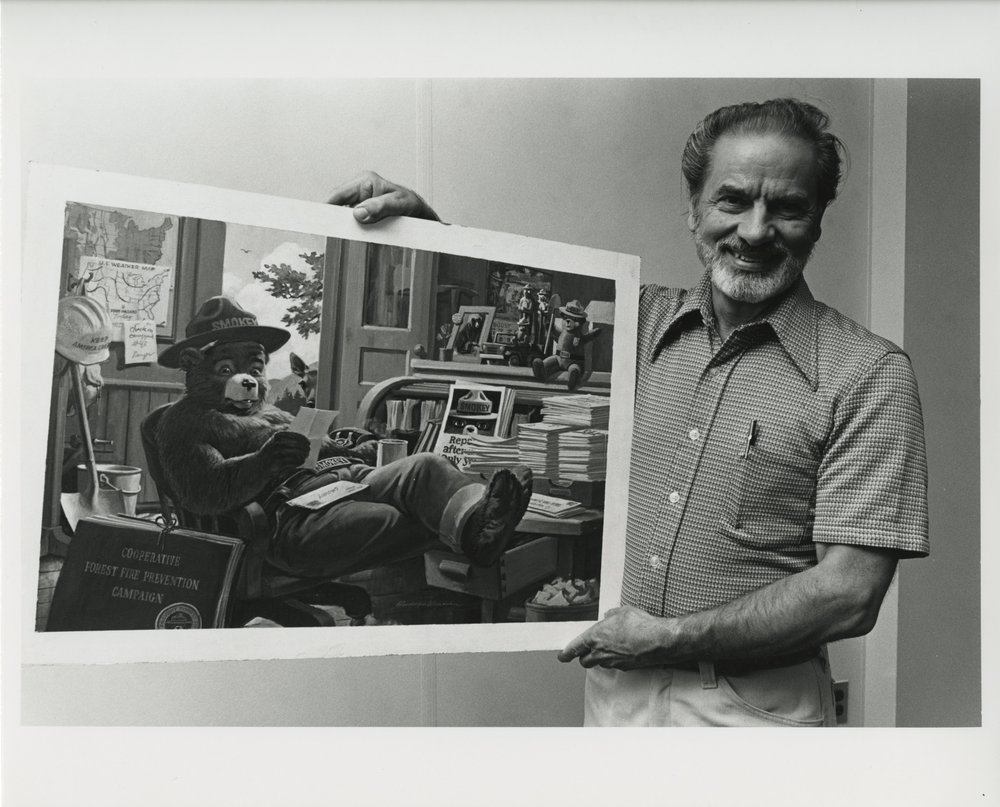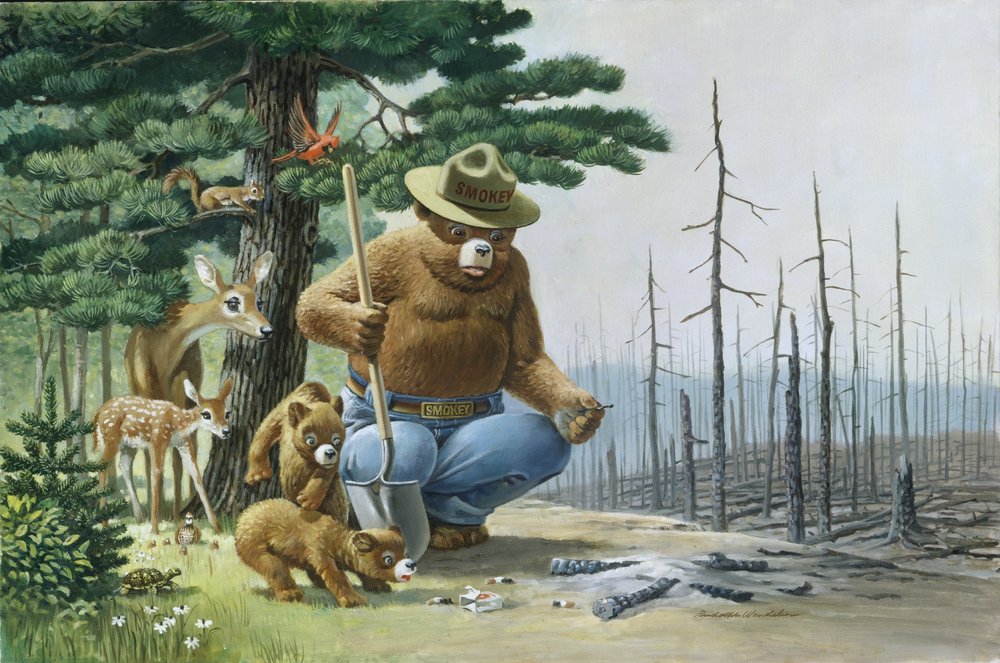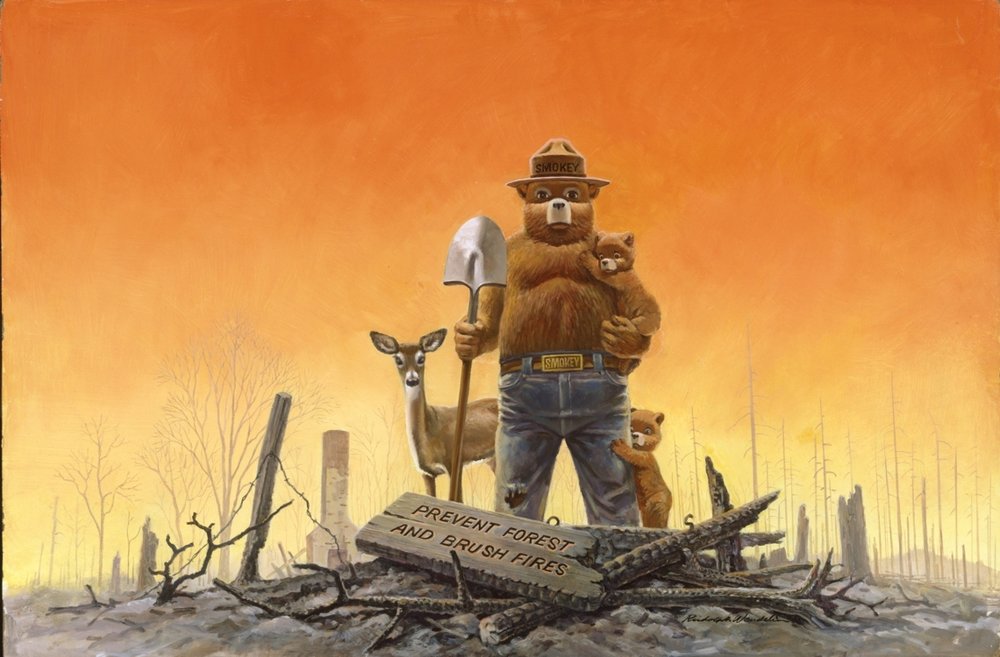Smokey Bear tours the Garden State this summer during 'surreal' wildfire season
July 3, 2023, 2:02 p.m.
The mobile art show, hosted by the New Jersey Forest Fire Service, includes 19 paintings done in oil, acrylics and watercolor by artist Rudy Wendelin.

An exhibit of Smokey Bear paintings is traveling through the Garden State this summer.
The mobile art show, hosted by the New Jersey Forest Fire Service, includes 19 paintings done in oil, acrylics and watercolor by Rudy Wendelin — the artist credited with popularizing the brawny brown bear as the icon of the U.S. Forest Service’s fire prevention campaign.
Born in 1944, the shirtless bruin with the baggy blue jeans and yellow ranger’s hat is the oldest public service campaign in American history. The U.S. Forest Service has had many mascots, like Woodsy Owl or Howdy the Good Outdoor Manners Raccoon, but organizers said they can’t compete with Smokey Bear’s popularity.
“Smokey Bear has endured after almost 80 years,” said Bill Love, NJ Forest Fire Service assistant division forest fire warden. “His message still resonates: ‘Only you can prevent forest fires.’”

On loan from the U.S. Department of Agriculture, the exhibition opened July 1 in Cape May. It will travel northward, stopping in five locations for week-long stays. The canvases displayed on easels include some original work for the classic fire prevention posters issued by the U.S. Forest Service over the last eight decades.
The exhibit’s last stop will be the New Jersey State House in Trenton in mid-August. Before then, it will visit the New York City metropolitan area from July 25 - Aug. 6 at Jersey City’s Liberty State Park.
The burly woodland animal became so popular that nearly a decade after his creation, U.S. Congress passed an act to remove Smokey Bear from public domain and put him under the control of the Secretary of Agriculture. This move allowed the use of royalties and fees to be used for wildfire prevention education.
“We throw a birthday party every year for Smokey Bear, and hundreds of people come out for Smokey,” Love said. “He captures children’s imagination without scaring them.”

When Smokey was first conceived, there was a growing fear of raging wildfires. At the time, with most able-bodied men enlisted in World War II, the U.S. Forest Service embarked on a campaign of fire prevention and education as a way to enlist the public’s help.
Because most wildfires are started by humans, the short-handed Forest Service reasoned that educating the public could be an effective way of preventing many of them from even happening. In fact, Smokey’s original message was, “Care will prevent 9 out of 10 forest fires.”
A bear seemed the best choice to capture America’s imagination, because it was majestic, powerful and also cute, according to the Ad Council. ”In his first appearance in 1944, Smokey was depicted by his original creator, illustrator Albert Staehle, in the simple action of putting out a campfire by pouring a bucket of water over it. It’s the first step to making sure a fire is properly extinguished.
Regulators did not keep official records for wildfires prior to 1983, but these blazes have grown roughly six-fold over the last 50 years, driven by human-caused climate change.

In an average year, New Jersey can expect about 1,500 wildfires and damage to 7,000 acres of woods.
Smokey’s visit comes at a time when the state is experiencing another above-average wildfire season. About half way through 2023, the NJ Forest Fire Service has already responded to more than 900 wildfires that have consumed more than 16,000 acres.
“It's surreal that I am working on a Smokey Bear display, and outside everything is opaque from the smoke,” Love said. “It drives home how important fire safety is, because most fires are caused by humans.”
In bringing Smokey to New Jersey, Love said he hopes this will inspire residents to be more diligent and aware of fire prevention.
Like smoking 30 cigarettes in 8 hours: NYC’s air quality crisis, tallied Queens locals get closer look at plans to make NYC’s largest power plant 'green' Only you can prevent forest fires from getting worse this summer in NY and NJ